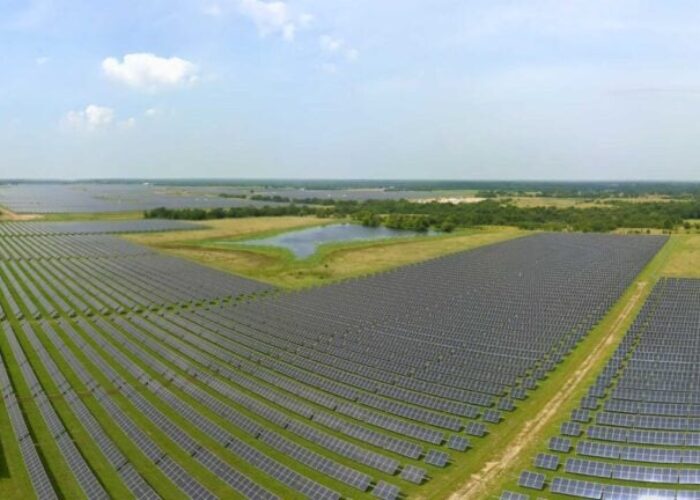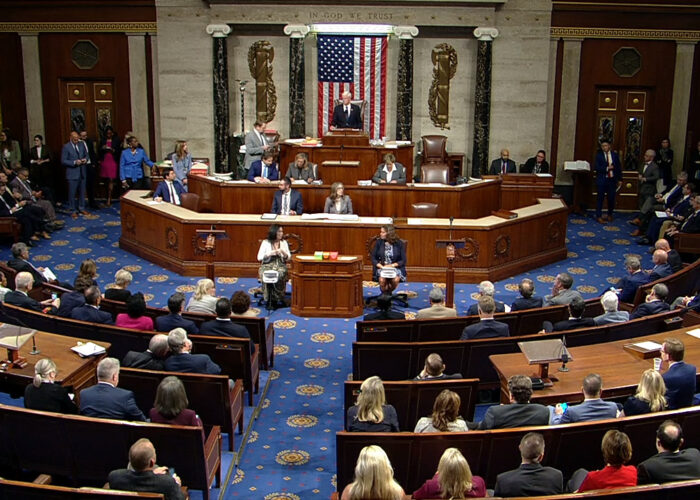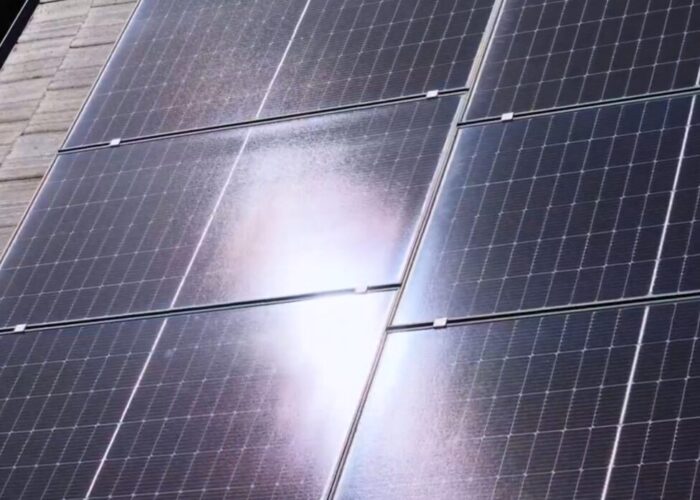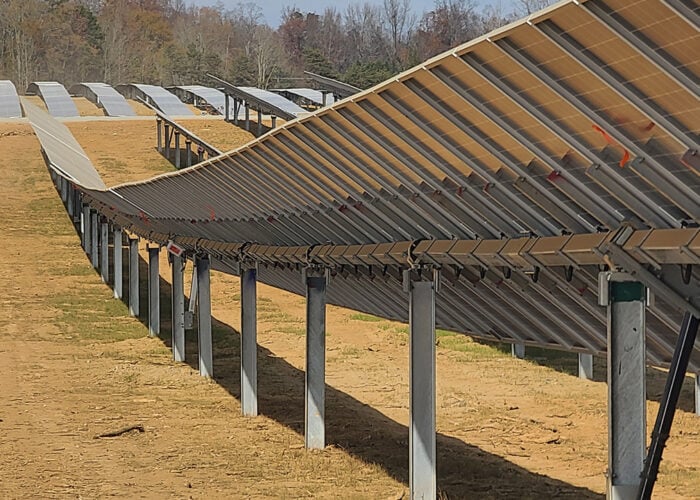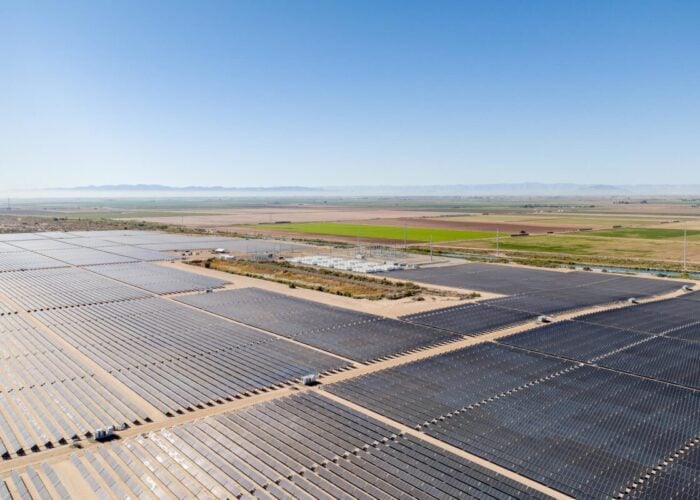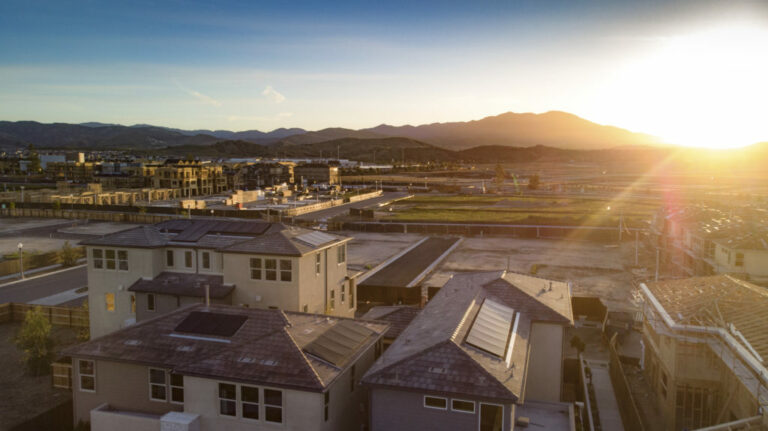
The shift towards distributed energy systems with new micro-grid and micro-utility options is receiving strong public demand in the US, but the pace of change is being restrained by the incumbent utilities, according to a spokesperson for a US-based micro-utility solution provider.
US residential solar installer Sunnova recently applied to develop a “first-of-its-kind” solar- and storage-focused “micro-utility” in California, allowing customers to reduce their reliance on the central grid energy supply. The project was driven by the view that there are other ways to serve customers than the traditional utility model and a desire to have different players garner a space in the market.
Unlock unlimited access for 12 whole months of distinctive global analysis
Photovoltaics International is now included.
- Regular insight and analysis of the industry’s biggest developments
- In-depth interviews with the industry’s leading figures
- Unlimited digital access to the PV Tech Power journal catalogue
- Unlimited digital access to the Photovoltaics International journal catalogue
- Access to more than 1,000 technical papers
- Discounts on Solar Media’s portfolio of events, in-person and virtual
“It’s always been these monopolies that are semi regulated controlling things and I would say not nearly regulated enough,” Meghan Nutting, Sunnova’s executive vice president of government and regulatory affairs, told PV Tech Premium. “How do we make room in the energy space to better serve customers? If there’s something else that they want, how do we make it cheaper? The micro-utility is one of our many efforts to try to do that.”
Inefficiency baked into the utility system
“Right now, people use whatever electricity they want and we ramp up or down the supply based on that,” adds Nutting. “That’s inefficient. What we need to do is match the supply to the demand. Obviously, you could do that more effectively with demand-side resources, like smart thermostats, batteries and solar, and getting people involved in programmes like this.”
A greater uptake in these kinds of models that allow management on the demand side would also help the integration of variable energy sources such as utility-scale wind and solar, therefore opening the door to the least cost and cleanest energy options.
“You don’t just burn natural gas and burn more to [provide] what people need,” says Nutting. “It’s got to be a more dynamic system and a more engaged system. And I think we’re at the crux of that. We’re between the homeowner and the grid or energy manager.”
Utilities acting like ‘gating agents’
Despite the clear benefits of the new models, providers of demand-side services like Sunnova can be hindered by incumbent energy companies, claims Nutting. She says that investor-owned utilities act like “gating agents” as new energy providers need a utility’s permission to energise their systems. Sunnova works with more than 500 utilities around the US and each one has its own unique interconnection procedures. Nutting also listed a number of ways that correspondence with such utilities is often held up with blame often being put on trivial postal, grammatical or administrative errors.
“Interconnection is a massive hurdle”, adds Nutting, claiming that Sunnova could have had many more customers on board if the process was easier. Currently, interconnection takes two months but sometimes up to eight months, making it very difficult to reach scale on rooftop PV deployment.
“We have this gating agent who has an incentive to undermine people putting solar on their rooftop,” says Nutting. “So it’s a definite conflict of interest.”
For example, Minnesota utility Xcel Energy was fined US$1 million in January 2021 for significant delays in its processing of interconnection requests for solar projects.
“The interconnection timeline was preposterous,” says Nutting. The fine was too small to have any impact and Xcel would still have made huge profits from the extra energy it was able to sell instead of allowing solar deployments, she adds.
How energy supply has evolved
Nutting outlined how in traditional systems, the utilities own the distribution system, which allows them to turn into monopolies because it doesn’t make sense to have multiple transmission or distribution systems.
“What’s innovative about this new home development is that there’s no distribution system existing already,” says Nutting. “There’s nothing that the utilities own already that you have to buy from them or pay them to use. You build a new home community from the ground up and you build your own distribution system within that and put it behind a meter. Then you’re allowed to have microgrids.”
At present, microgrids are only allowed privately if they’re behind a meter, in locations such as a university campus, military base or a grocery store complex.
“I’m obviously a huge proponent of distributed energy resources. That’s the beauty of them, you start with a home connected to some other homes in a community and [it moves in] concentric rings out, rather than the top-down way.”
Nutting says there is still a role for large-scale big power plants, particularly wind and solar, but with micro-utilities, there is no full dependence on one power source and there are multiple fail-safes in the system.
For example, Sunnova’s wholly owned subsidiary called Sunnova Community Microgrids California develops “self-sustaining micro-utilities” by equipping Californian communities with solar and storage that will provide customers with modern energy services and infrastructure to go alongside traditional grid-supplied energy.
Nutting started working for SolarCity in 2009 at a time when financing and installing solar PV on a rooftop was groundbreaking and the only service on offer. The industry has now shot past that point towards integrating electric vehicle chargers for home vehicles to the grid, adding batteries and whole household energy management systems as well as offering resilience to exposed communities.
“We have customers in Puerto Rico right now who are fine. Tens of thousands of people, because they have solar and storage on their homes. So we’re rewriting how people interact with the whole energy system,” says Nutting.
“It’s one thing to have backup power if your utility power goes down for one or two hours one day and you can’t open your garage. It’s another thing entirely to be faced with up to two months of having no power, so there’s different orders of magnitude in that.”
ISO auction New England
Sunnova has also participated in the independent system operator New England (ISO-NE) auction as part of the wholesale capacity market and had a bid accepted requiring the company to start delivering power in 2023 using solar and batteries to manage power.
“It’s crazy,” says Nutting. “We are retail, behind-the-meter energy providers fitting into a wholesale market, because we can aggregate that power, as though we are a power plant and sell into a market that only power plants like big regular power plants can sell into.”
There are similar programmes more broadly in New England as well as in Hawaii, where the utility pays consumers to help offset the cost of a battery and in return the consumer provides power to the utility when called upon. Nutting describes this function as a “virtual power peaker plant”.
There is huge customer demand and it is hard to keep up with it, says Nutting. Sunnova’s systems can offer cheaper electricity than the utilities, whose rates are up 40% on average this year in the US. In Puerto Rico, for example, rates are going up three or four cents a quarter, making it very noticeable to consumers for the first time.
“People are interested in not having their power go out, making sure they’re protected – They want to go green,” says Nutting. “We hear more and more about that. So, utilities are helping us by being so expensive and so unreliable.”
Inflation Reduction Act (IRA) ‘turbocharging economy
Nutting claims that the whole US economy will be “turbocharged” by the new IRA and that Sunnova has been very supportive of domestic manufacturing.
“We’ve been really vocal about our dislike of the tariffs,” she says. “We’ve had tariffs since 2012. It has done nothing to build up the domestic industry. But if we have the actual financial support, we’re getting somewhere now.”
The IRA is expected to attract large numbers of workers into the sector. The US solar industry employed 255,037 workers as of 2021, according to the 12th annual National Solar Jobs Census.
“We need 800,000 by 2035 in order to meet Biden’s goals, so we need to quadruple,” adds Nutting. “We need to take the brilliant people from outside the industry who want purpose to the work that they do and then train them specifically on the solar side of things.”

